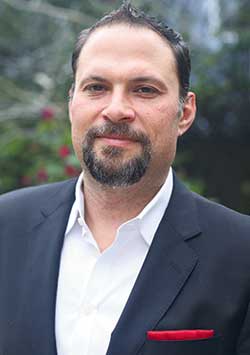Michael Scheiman started his career cooking at some of the country's most notable restaurants, including New York's Nobu, Tribeca Grill and Soho Grand Hotel, where he earned accolades as a rising star chef. Scheiman then found his way to California Café in Palo Alto, Calif., as the executive chef.
 Michael Scheiman"It was going well — I was rebuilding my name on the West Coast when a sudden kitchen accident ended those goals," he recalls. Two years in rehab still did not restore his back to the point Scheiman could stand and cook for long hours or bend properly while prepping.
Michael Scheiman"It was going well — I was rebuilding my name on the West Coast when a sudden kitchen accident ended those goals," he recalls. Two years in rehab still did not restore his back to the point Scheiman could stand and cook for long hours or bend properly while prepping.
Scheiman parlayed his foodservice experience into a senior project manager position for a Northern California foodservice equipment and supplies dealer before joining Myers Restaurant Supply as vice president, business development + design five years ago. His clients consist of mainly higher-end, culinary-focused restaurants, along with a few emerging chains.
FE&S: How does your operations background help you develop good designs?
MS: A lot has to do with spending that many hours of your life seeing things done wrong. It's about trial and error, but for me I'm overly analytical about everything.
FE&S: Describe your approach to researching the right piece of equipment.
MS: For me, it will always start with meeting the client and discussing their menu to ensure I understand what they're trying to achieve. There's a difference between hearing what someone is telling you about their food and actively listening to what they're saying. Chefs tend to be high strung, and the process can get buried by their passion, so it's important to ask the right questions.
FE&S: How has technology helped make the design process and equipment selection better?
MS: The ability to share my screens with clients in real time and have them watch me do things, like draw kitchens or locate equipment virtually, has made it a much easier to get the first draft done more quickly. Before this technology, the process would take two or three weeks. Now, the ideas are more real, and with 3-D possibilities, it's even more so.
FE&S: What are the biggest challenges working with higher-end restaurants?
MS: Operators of both white-tablecloth and fast-casual restaurants want to spend as little as possible yet get the most for their money. With higher-end restaurants, you need to implement tricks to be more upscale without it costing more.
FE&S: How does your chef experience serve you in your current role?
MS: I understand how hard serious chefs are on themselves because I was the same way. Being a part of that and maintaining contacts has really helped. They are the ones pushing technology further out, not the equipment manufacturers. It's the chefs who are setting the trends.
FE&S: What's the most important lesson you have learned?
MS: Balance is important. Now that I'm older, the biggest lesson that I've learned and continue to learn is to find ways to have balance. This may be as little as taking a five-minute break in a crazy atmosphere and remembering that you love what you do.



